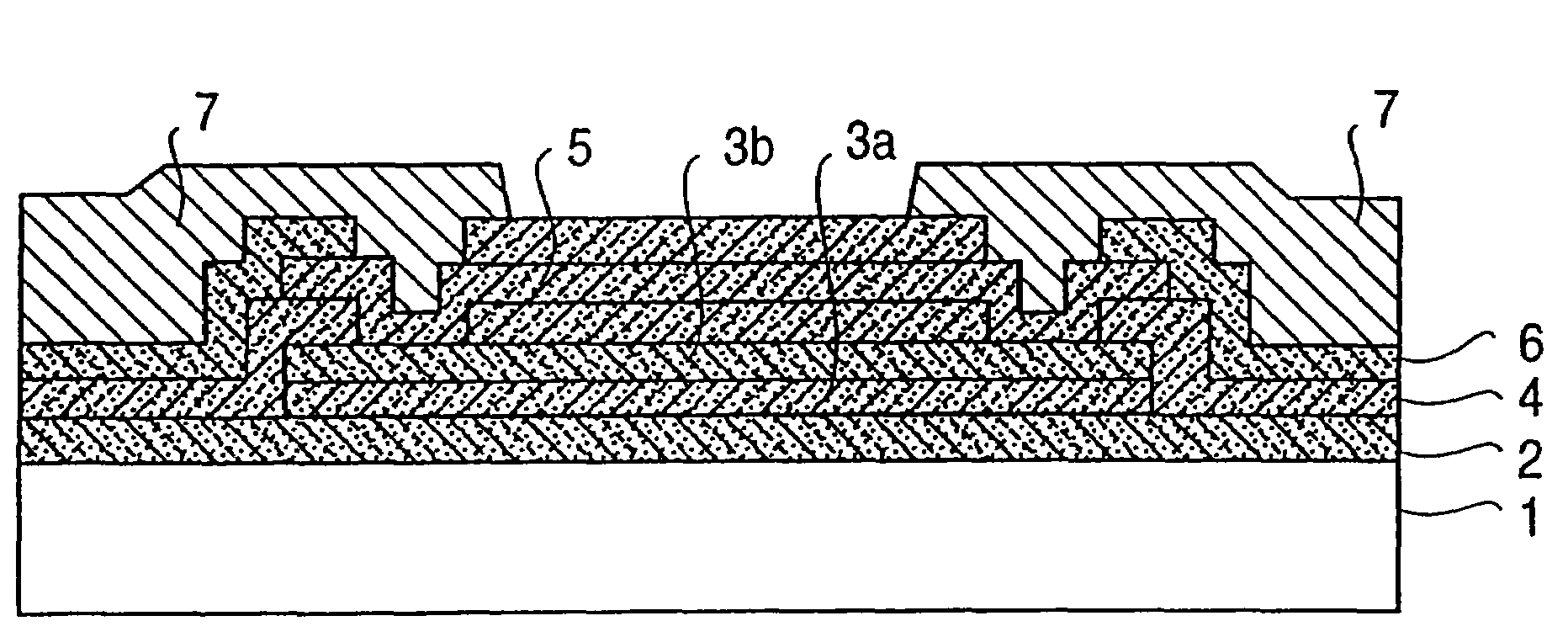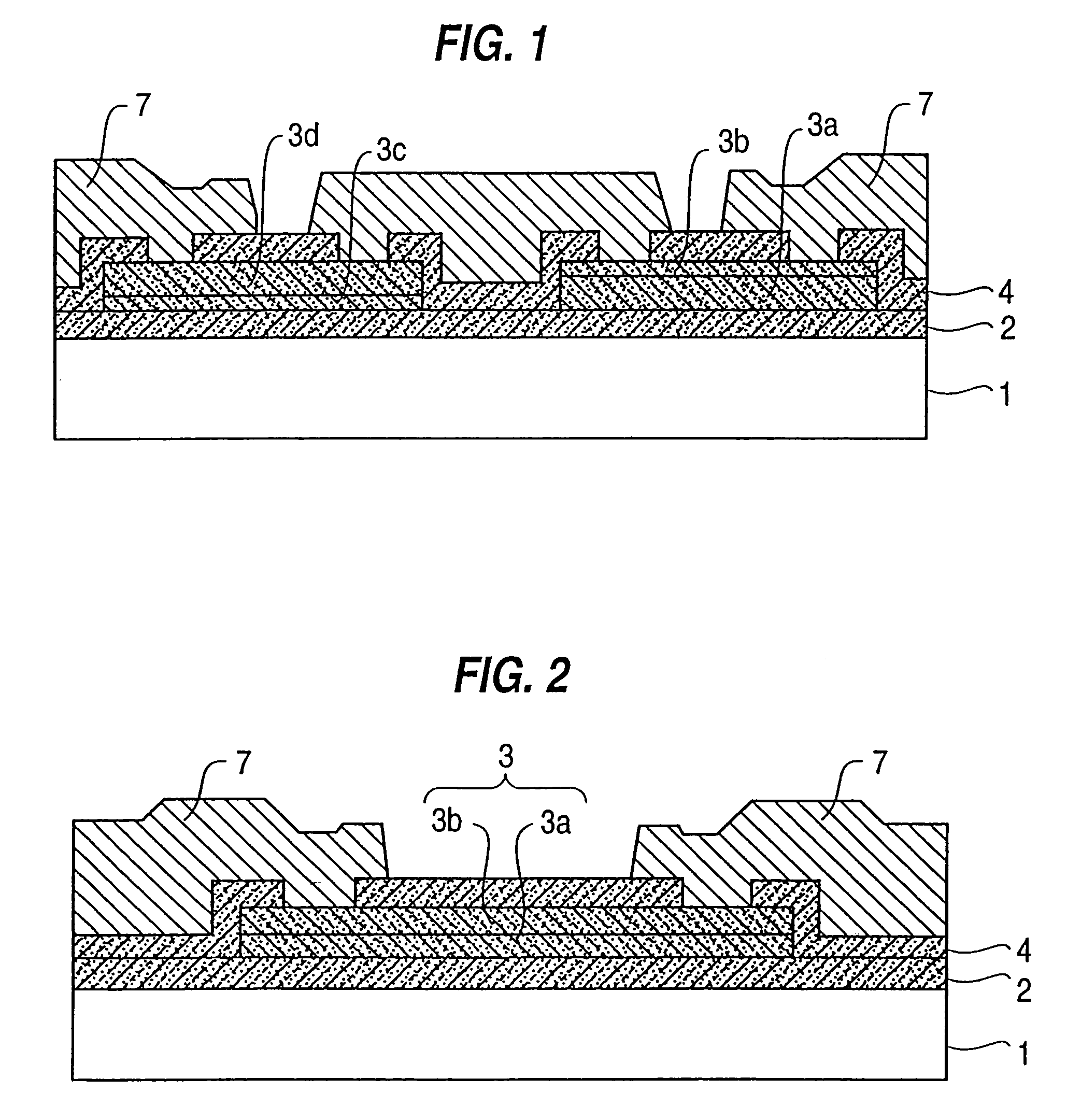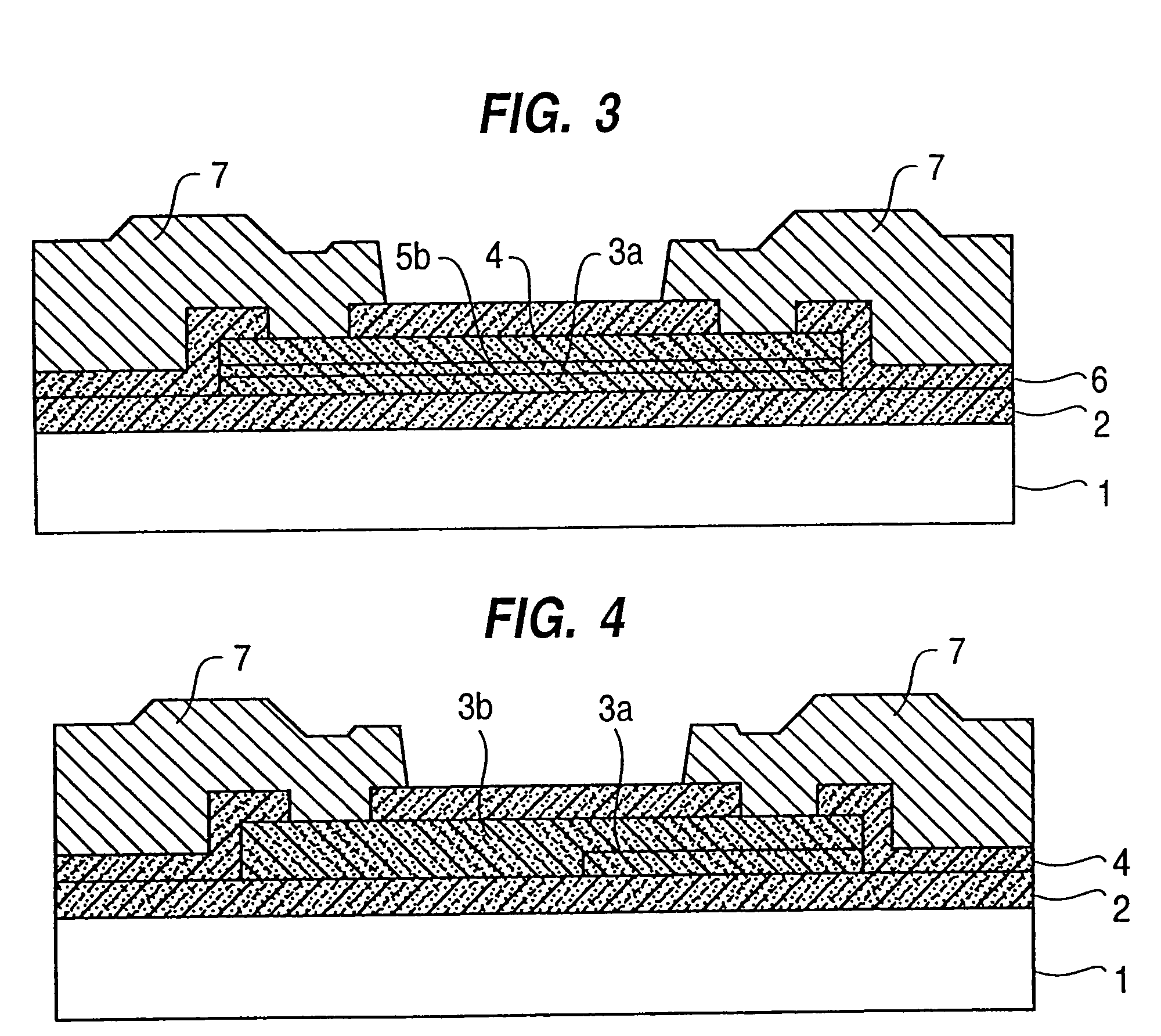Semiconductor device and process of producing the same
a technology of semiconductor devices and resistors, which is applied in the direction of semiconductor devices, diodes, resistors, etc., can solve the problems of difficult to both control the resistance value to a desired value, provide a temperature dependence of resistance that is substantially zero, and provide resistors of desired resistance values. , to achieve the effect of convenient manufacturing
- Summary
- Abstract
- Description
- Claims
- Application Information
AI Technical Summary
Benefits of technology
Problems solved by technology
Method used
Image
Examples
embodiment 1
[0099]Referring to FIG. 2, a first embodiment of the present invention will be described. FIG. 2 illustrates a resistor embodying the present invention, wherein an attempt is made to improve temperature dependence of resistance (e.g., provide a resistor whose resistance is substantially independent of temperature over a temperature range of use of the resistor) by providing a polycrystalline silicon film 3 of two-layer structure including a first polycrystalline silicon layer 3a of small grain size and a second polycrystalline silicon layer 3b of large grain size. Thus, the resistor in FIG. 2 is constituted by the first and second polycrystalline silicon films 3a, 3b, the resistor being electrically connected at both ends to aluminum electrodes 7,7.
[0100]The prior art structure has shortcomings in that fluctuations in temperature dependence of resistance is dependent on resistivity, because polycrystalline silicon film or single crystal structure is used as a resistance material. Si...
embodiment 2
[0105]Referring to FIG. 3, a second embodiment will be described. FIG. 3 illustrates a resistor embodying the present invention, wherein an attempt is also made to improve temperature dependence of resistance by providing a polycrystalline silicon film of two-layer structure including a first polycrystalline silicon layer 3a of small grain size and a second polycrystalline silicon layer 5b of large grain size. More specifically, the two-layer structure of polycrystalline silicon is made attainable likewise by varying the deposition temperature at which the polycrystalline silicon of large grain size and that of small grain size are formed. However, the use of n-type impurities of such as phosphorous in that method may cause one or both of the polycrystalline silicon films to affect the other, or each other, as far as their crystal structure is concerned, during the process of crystallization with heat treatment, thus making it difficult to attain a two-layer structure of good qualit...
embodiment 3
[0109]This embodiment 3 is an application of the improved temperature dependence resulting from the two-layer structure of polycrystalline silicon resistors shown in Embodiments 1 and 2.
[0110]As is clear from FIG. 1, two or more than two kinds of resistor layers 3a, 3b, 3c, 3d, different from each other in sheet resistance, are formed in polycrystalline silicon layers laid on one and the same substrate. If the methods referred to in Embodiments 1 and 2 are used (e.g., by carefully selecting the conditions of ion implantation when forming layers 3b and 3d), sheet resistance and temperature dependence may be varied as desired. In other words, the temperature dependence of two or more than two kinds of resistors different in sheet resistance can simultaneously be reduced to almost zero or slightly positive. Thus, each of the resistor formed by layers 3a and 3b, and the resistor formed by layers 3c and 3d, can have temperature dependence of resistance that is substantially zero (or wher...
PUM
| Property | Measurement | Unit |
|---|---|---|
| temperatures | aaaaa | aaaaa |
| temperature | aaaaa | aaaaa |
| temperature | aaaaa | aaaaa |
Abstract
Description
Claims
Application Information
 Login to View More
Login to View More - R&D
- Intellectual Property
- Life Sciences
- Materials
- Tech Scout
- Unparalleled Data Quality
- Higher Quality Content
- 60% Fewer Hallucinations
Browse by: Latest US Patents, China's latest patents, Technical Efficacy Thesaurus, Application Domain, Technology Topic, Popular Technical Reports.
© 2025 PatSnap. All rights reserved.Legal|Privacy policy|Modern Slavery Act Transparency Statement|Sitemap|About US| Contact US: help@patsnap.com



